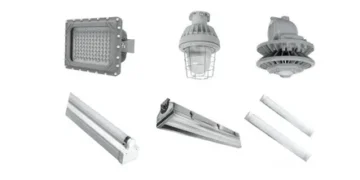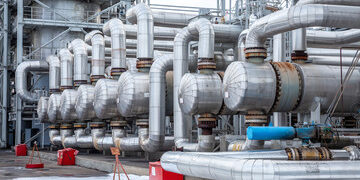Shade nets are not merely for blocking out sunlight. Although controlling temperature and light exposure is their primary purpose, contemporary farming and gardening methods have revealed additional, less well-known applications that make shade nets a helpful tool all year round. They can improve plant health in ways that most producers never consider, from controlling the microclimate to managing pests.
This article examines 11 surprising and valuable applications for shade nets that benefit commercial crops and household gardeners. Understanding these uses makes higher yields, more sustainable practices, and more intelligent crop management possible.
Why Shade Nets Matter in Modern Plant Protection
Shade nets are made of UV-stabilized polyethylene and come in various shading percentages. They help preserve ideal growing conditions in intense heat, frost, wind, and light environments. Their lightweight, porous design provides dependable coverage while permitting airflow. Nets can alleviate up to 40% of plant stress during maximum sunshine in tropical regions, directly affecting productivity and survival rates.
1. Reducing Leaf Scorch and Photosynthetic Stress
Plants like lettuce, spinach, and basil often suffer from photoinhibition when exposed to excessive light. Shade nets reduce light intensity to prevent chlorophyll degradation and cellular damage. Netting with 50% to 70% shade is ideal for leafy crops.
- Shields chloroplasts from UV damage.
- Prevents bleaching and sunburn in young foliage.
In one study by Punjab Agricultural University, crops under shade nets recorded a 27% higher chlorophyll index than open-field counterparts.
2. Temperature Regulation in Polytunnels and Greenhouses
Shade nets help control interior temperatures in enclosed systems without sacrificing ventilation. This is extremely helpful when polytunnels get hot and dry in the summer. Depending on the environment and mesh density, placing a shade net over the roof or sides can lower temperatures by 4°C to 6°C.
Several growers use misting systems with reflective shade nets to create the illusion of colder, humid conditions for exotic herbs or orchids.
3. Windbreaks for Young and Fragile Plants
High winds are hazardous for flowering plants and young saplings. Shade netting with strengthened edges can serve as windbreaks around the perimeter. They lessen breakage and moisture loss by uniformly distributing airflow, which lowers wind speed.
In exposed gardens, wind stress frequently results in bending, leaf tearing, and inadequate root growth. Installing vertical garden shade nets—genuine 90% shade panels—offers superior protection while permitting filtered light and air, especially in high-altitude or coastal areas.
4. Creating Humidity Zones for Moisture-Loving Crops
Higher humidity is necessary to grow certain plants, such as ferns, mosses, and tropical vines. Shade nets retain ambient moisture beneath their canopy and slow down the rate of evaporation. This lessens the need for frequent watering and promotes a more stable microclimate.
- Ideal for nursery propagation of cuttings.
- Enhances root development in potted plants.
Greenhouses using shade net enclosures recorded a 17% increase in air moisture compared to those without coverage, according to a trial conducted in central Kerala.
5. Enhancing Pollination Efficiency
By keeping pollinators away from non-target plants, shade nets can direct them toward certain crops. Orchard cultivation and the manufacturing of hybrid seeds benefit significantly from this regulated access. Larger mesh nets (4–8 mm) keep pests out while letting bees and butterflies in.
Reducing outside disturbance increases pollination success. Controlling insect movement improves the precision of cross-pollination and guards against contamination from undesirable kinds in many controlled farming setups.
6. Pest Exclusion Without Chemicals
Insecticide-free farming requires physical barriers to minimize pest attacks. High-density shade nets (75%–90%) offer a double benefit: they reduce light for shade-tolerant crops and block common pests such as whiteflies, thrips, and aphids.
Their integrated pest management (IPM) role has become increasingly important as growers transition from synthetic pesticides. Research published by ScienceDirect on IPM in protected farming confirms that net-based exclusion zones significantly reduce infestation levels.
7. Creating Seasonal Crop Rotation Zones
Farmers often need transitional planting areas between rotations. Shade nets enable the creation of temporary growth zones with customized climate conditions. These zones help acclimatize seedlings or protect recovering soil before planting sensitive crops.
For instance, netting after a heavy harvest allows cover crops like clover or mustard to establish under moderate light conditions, improving soil nitrogen levels and structure.
8. Enhancing Color in Ornamental Plants and Flowers
Some flowering plants, such as poinsettias, chrysanthemums, and coleus, display more vibrant pigmentation when grown under filtered light. Shade nets reduce light intensity, slowing transpiration and encouraging deeper color saturation in petals and leaves.
This aesthetic improvement is not just visual—it increases commercial value. Floriculturists use red or green shade nets selectively to influence hues and patterns, adding market competitiveness to ornamental production.
“Healthy plants don’t just grow, they perform. And performance needs the right stage.”
This concept applies to every kind of crop, especially when growing conditions can be modified with low-cost tools like shade nets.
9. Seed Drying and Post-Harvest Protection
To ensure germination viability, harvested seeds and pods must gradually dry in indirect light. Shade nets provide a partially covered space with regulated temperature and airflow, reducing post-harvest losses and stopping microbial development.
Cracking, fungal infections, and uneven moisture loss are common outcomes of sun drying. For seed banks and organic farms, net-covered drying zones are essential because they maintain a consistent drying rate.
10. Urban Gardening Privacy Screens
In city gardens, space is limited and exposure is high. Shade nets offer privacy, security, and climate control on rooftops, balconies, and patios. DIY gardeners use nets to construct vertical screens or roof shades, creating a controlled mini-ecosystem even in dense neighborhoods.
As urban gardening expands, so does the need for adaptable tools. Shade nets offer flexibility and function without high costs or structural changes. Platforms like Permaculture Research Institute often feature creative urban designs using shade mesh as a foundation.
11. Protecting Plants from Acid Rain and Dust Pollution
Exposure to acid rain or high dust levels can cause long-term stress to foliage in regions prone to these conditions. Shade nets act as a shield, intercepting harmful particulates and acidic droplets before they settle on plant surfaces. This protection is essential for plants with large surface areas, such as bananas, taro, or ornamental palms.
Dust coverage reduces photosynthesis by up to 35% in open areas. With a properly installed net overhead, this figure drops drastically. It also helps maintain soil cleanliness in raised beds and containers.
FAQs
- Can I use shade nets for indoor plants?
Yes, if you’re using a greenhouse or a sunroom, shade nets help regulate excessive sunlight from windows or roof panels. Choose 30%–50% shading for light-sensitive indoor species. - Do all plants benefit from shade nets?
Not all. Some crops like corn, okra, or sunflowers require full sunlight. Use shade nets selectively based on plant type and local conditions. - How do I choose the right shade percentage?
It depends on crop type and climate. Leafy greens prefer 50%–70% shade, while ornamentals might thrive under 30%–50%. Fruit crops usually require less shading. - Are colored shade nets better?
Colored nets influence plant growth differently. Red nets promote flowering, while green nets balance light diffusion. Always match color and percentage to your plant’s needs. - Do shade nets increase humidity?
Yes. By slowing down evaporation and airflow, nets help maintain higher relative humidity under the canopy, benefiting moisture-loving plants.
How to Set Up Shade Nets for Maximum Effectiveness
Setting up your netting depends on whether you’re covering rows, beds, or large tunnels. Start by framing a simple support structure using PVC or galvanized steel poles. Tighten the net, but leave room for airflow. Avoid placing nets directly on foliage, which can trap moisture and cause fungal buildup.
Clip-on shade panels are ideal in smaller setups. For long rows or more extensive gardens, install high tunnels with retractable shade netting for flexible control. Always anchor your setup well to withstand wind and seasonal weather.
Use netting connectors or zip ties to avoid damaging the mesh. Periodically check for tears, sagging, or dislodged clips, especially after storms.
Final Thought: Transforming Simple Mesh into Smart Farming Tools
What starts as a mesh fabric becomes a powerful garden tool when used with intention. These 11 applications show that shade nets serve beyond their obvious function, influencing crop quality, soil health, and farm sustainability. When integrated smartly, even a single roll of shade netting can protect, optimize, and elevate your garden in ways you might not have imagined.

























